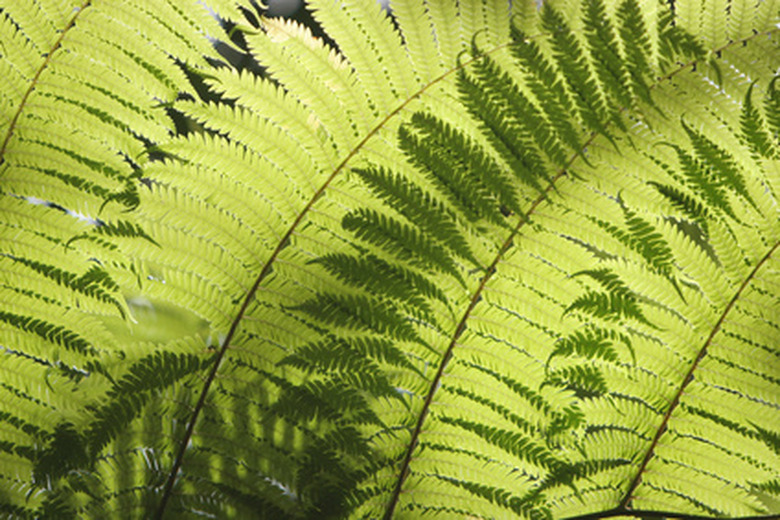Diseases Of Ferns
There are nearly 11,000 species of ferns, and they exist on every continent. They can be as tiny as 2 to 3 inches or as tall as 30 feet, and they need very little soil to grow in. While ferns grown outdoors are generally unaffected by disease, the same is not true of indoor ferns.
There are nearly 11,000 species of ferns, and they exist on every continent. They can be as tiny as 2 to 3 inches or as tall as 30 feet, and they need very little soil to grow in. While ferns grown outdoors are generally unaffected by disease, the same is not true of indoor ferns.
Bacterial & Rhizoctonia Blight
Indoor ferns can be infected with bacterial blight, a disease that produces translucent spots across the plant's leaves. These spots increase in size rapidly and turn reddish-brown ringed with purple. The disease is caused by a bacterium that attacks a wide range of ornamental plants, or by a pathogen that causes rust disease on other plants. Managing the disease involves purchasing disease-free plants, keeping the leaves dry, and disposing of infected plants. Rhizoctonia blight causes irregular brown spots on leaves closest to the plant's crown. The spots spread quickly, and fungus webs form between the fronds. Controls include using pasteurized potting soil or spraying a foliar fungicide on the leaves.
- There are nearly 11,000 species of ferns, and they exist on every continent.
- Indoor ferns can be infected with bacterial blight, a disease that produces translucent spots across the plant's leaves.
Graying
Boston ferns in particular can be affected by graying, which causes the leaves to turn gray and the plants to produce fewer runners or vines. Underwatering is sometimes the culprit, as are infestations by nematodes, a fungus that attacks the roots, and root rot. The soil that Boston ferns are grown in should be kept evenly moist all the time and not allowed to dry out.
Nematodes
Nematodes also attack the leaves of ferns, creating small, dark green spots that turn brown or black as they grow larger. Management of this disease includes discarding infected plants and making sure the leaves, or fronds, don't get wet during watering. Other nematodes attack both the leaves and roots of fern plants, producing gray foliage that eventually wilts and dies and roots that eventually rot.
Other Diseases
Excessive fertilizing can cause frond lobing of the fern leaves. Tips of the leaves may also exhibit a crinkled appearance or be dead. Too much fertilizer is also to blame for leaf tip burn, in which the tips of the fern leaves turn brown and die. Pythium root rot causes plants to turn gray or yellow. Their growth may be stunted and their roots rotted. Plant ferns in pasteurized potting soil and use fertilizer salts containing potassium, phosphorus, etridiazole and thiophanate methyl to ward off this disease.
- Boston ferns in particular can be affected by graying, which causes the leaves to turn gray and the plants to produce fewer runners or vines.
